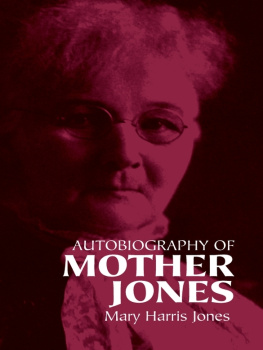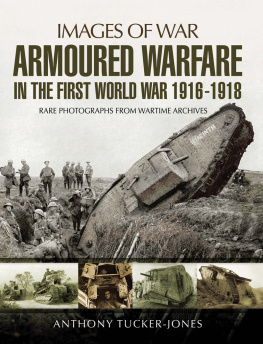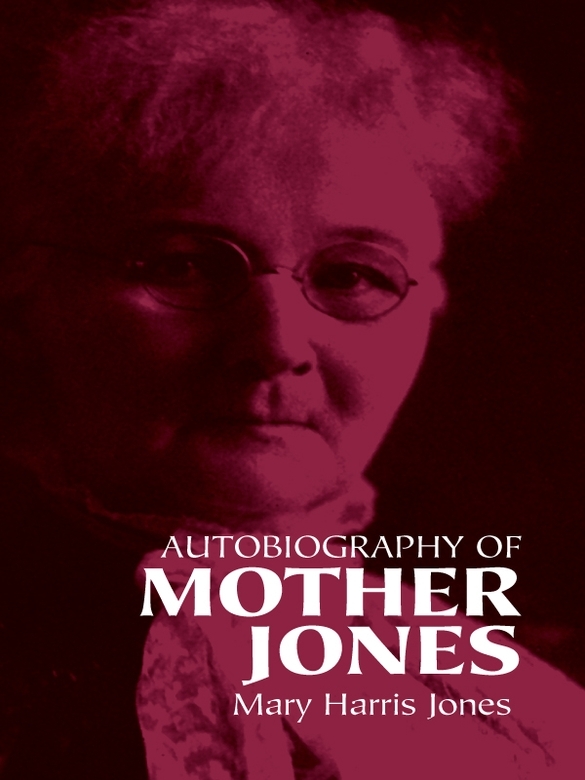CHAPTER I
EARLY YEARS
I WAS born in the city of Cork, Ireland, in 1830. My people were poor. For generations they had fought for Irelands freedom. Many of my folks have died in that struggle. My father, Richard Harris, came to America in 1835, and as soon as he had become an American citizen he sent for his family. His work as a laborer with railway construction crews took him to Toronto, Canada. Here I was brought up but always as the child of an American citizen. Of that citizenship I have ever been proud.
After finishing the common schools, I attended the Normal school with the intention of becoming a teacher. Dressmaking too, I learned proficiently. My first position was teaching in a convent in Monroe, Michigan. Later, I came to Chicago and opened a dressmaking establishment. I preferred sewing to bossing little children.
However, I went back to teaching again, this time in Memphis, Tennessee. Here I was married in 1861. My husband was an iron moulder and a staunch member of the Iron Moulders Union.
In 1867, a yellow fever epidemic swept Memphis. Its victims were mainly among the poor and the workers. The rich and the well-to-do fled the city. Schools and churches were closed. People were not permitted to enter the house of a yellow fever victim without permits. The poor could not afford nurses. Across the street from me, ten persons lay dead from the plague. The dead surrounded us. They were buried at night quickly and without ceremony. All about my house I could hear weeping and the cries of delirium. One by one, my four little children sickened and died. I washed their little bodies and got them ready for burial. My husband caught the fever and died. I sat alone through nights of grief. No one came to me. No one could. Other homes were as stricken as was mine. All day long, all night long, I heard the grating of the wheels of the death cart.
After the union had buried my husband, I got a permit to nurse the sufferers. This I did until the plague was stamped out.
I returned to Chicago and went again into the dressmaking business with a partner. We were located on Washington Street near the lake. We worked for the arisocrats of Chicago, and I had ample opportunity to observe the luxury and extravagance of their lives. Often while sewing for the lords and barons who lived in magnificent houses on the Lake Shore Drive, I would look out of the plate glass windows and see the poor, shivering wretches, jobless and hungry, walking along the frozen lake front. The contrast of their condition with that of the tropical comfort of the people for whom I sewed was painful to me. My employers seemed neither to notice nor to care.
Summers, too, from the windows of the rich, I used to watch the mothers come from the west side slums, lugging babies and little children, hoping for a breath of cool, fresh air from the lake. At night, when the tenements were stifling hot, men, women and little children slept in the parks. But the rich, having donated to the charity ice fund, had, by the time it was hot in the city, gone to seaside and mountains.
In October, 1871, the great Chicago fire burned up our establishment and everything that we had. The fire made thousands homeless. We stayed all night and the next day without food on the lake front, often going into the lake to keep cool. Old St. Marys church at Wabash Avenue and Peck Court was thrown open to the refugees and there I camped until I could find a place to go.
Near by in an old, tumbled down, fire scorched building the Knights of Labor held meetings. The Knights of Labor was the labor organization of those days. I used to spend my evenings at their meetings, listening to splendid speakers. Sundays we went out into the woods and held meetings.
Those were the days of sacrifice for the cause of labor. Those were the days when we had no halls, when there were no high salaried officers, no feasting with the enemies of labor. Those were the days of the martyrs and the saints.
I became acquainted with the labor movement. I learned that in 1865, after the close of the Civil War, a group of men met in Louisville, Kentucky. They came from the North and from the South; they were the blues and the greys who a year or two before had been fighting each other over the question of chattel slavery. They decided that the time had come to formulate a program to fight another brutal form of slaveryindustrial slavery. Out of this decision had come the Knights of Labor.
From the time of the Chicago fire I became more and more engrossed in the labor struggle and I decided to take an active part in the efforts of the working people to better the conditions under which they worked and lived. I became a member of the Knights of Labor.
One of the first strikes that I remember occurred in the Seventies. The Baltimore and Ohio Railroad employees went on strike and they sent for me to come help them. I went. The mayor of Pittsburgh swore in as deputy sheriffs a lawless, reckless bunch of fellows who had drifted into that city during the panic of 1873. They pillaged and burned and rioted and looted. Their acts were charged up to the striking workingmen. The governor sent the militia.
The Railroads had succeeded in getting a law passed that in case of a strike, the train-crew should bring in the locomotive to the roundhouse before striking. This law the strikers faithfully obeyed. Scores of locomotives were housed in Pittsburgh.
One night a riot occurred. Hundreds of box cars standing on the tracks were soaked with oil and set on fire and sent down the tracks to the roundhouse. The roundhouse caught fire. Over one hundred locomotives, belonging to the Pennsylvania Railroad Company were destroyed. It was a wild night. The flames lighted the sky and turned to fiery flames the steel bayonettes of the soldiers.
The strikers were charged with the crimes of arson and rioting, although it was common knowledge that it was not they who instigated the fire; that it was started by hoodlums backed by the business men of Pittsburgh who for a long time had felt that the Railroad Company discriminated against their city in the matter of rates.
I knew the strikers personally. I knew that it was they who had tried to enforce orderly law. I knew they disciplined their members when they did violence. I knew, as everybody knew, who really perpetrated the crime of burning the railroads property. Then and there I learned in the early part of my career that labor must bear the cross for others sins, must be the vicarious sufferer for the wrongs that others do.
These early years saw the beginning of Americas industrial life. Hand and hand with the growth of factories and the expansion of railroads, with the accumulation of capital and the rise of banks, came anti-labor legislation. Came strikes. Came violence. Came the belief in the hearts and minds of the workers that legislatures but carry out the will of the industrialists.
CHAPTER II
THE HAYMARKET TRAGEDY
F ROM 1880 on, I became wholly engrossed in the labor movement. In all the great industrial centers the working class was in rebellion. The enormous immigration from Europe crowded the slums, forced down wages and threatened to destroy the standard of living fought for by American working men. Throughout the country there was business depression and much unemployment. In the cities there was hunger and rags and despair.
Foreign agitators who had suffered under European despots preached various schemes of economic salvation to the workers. The workers asked only for bread and a shortening of the long hours of toil. The agitators gave them visions. The police gave them clubs.











